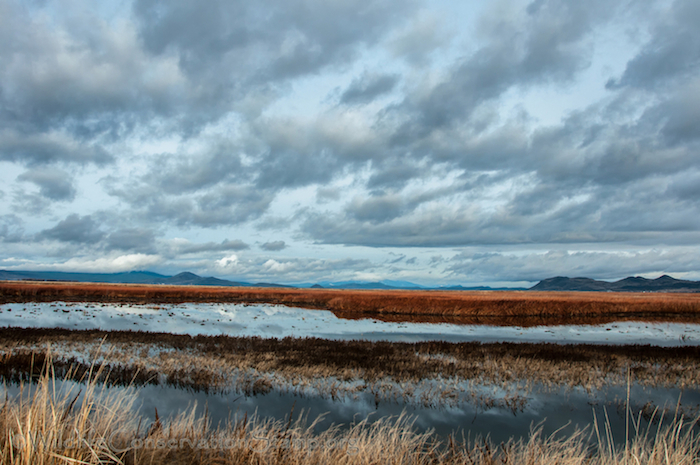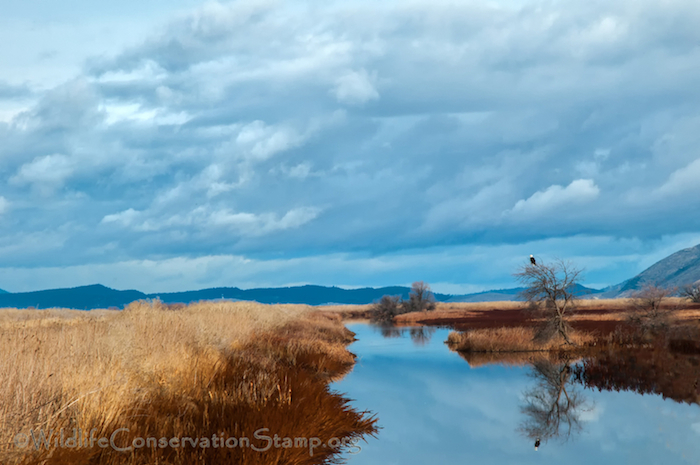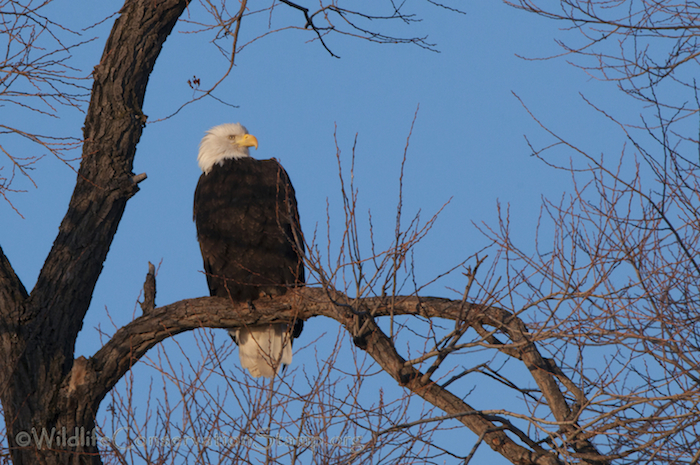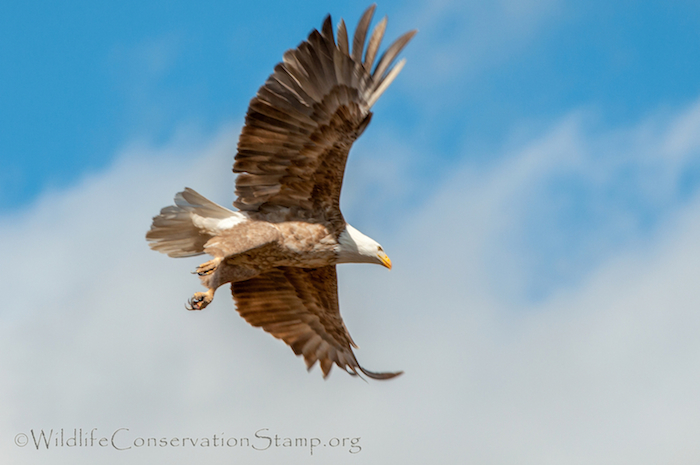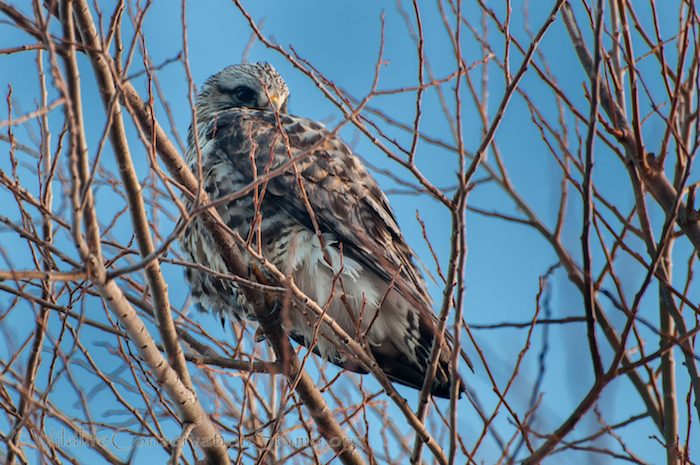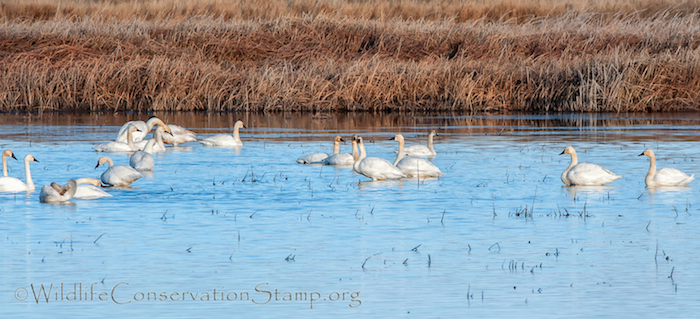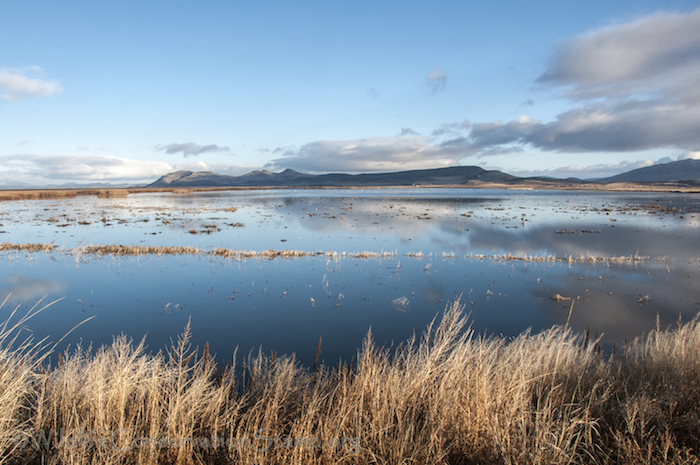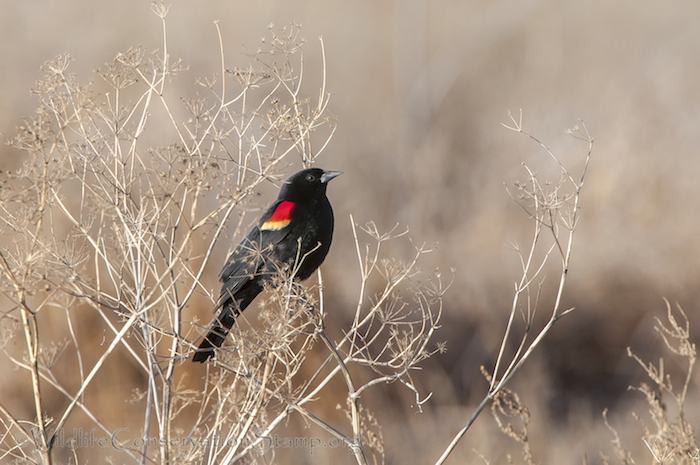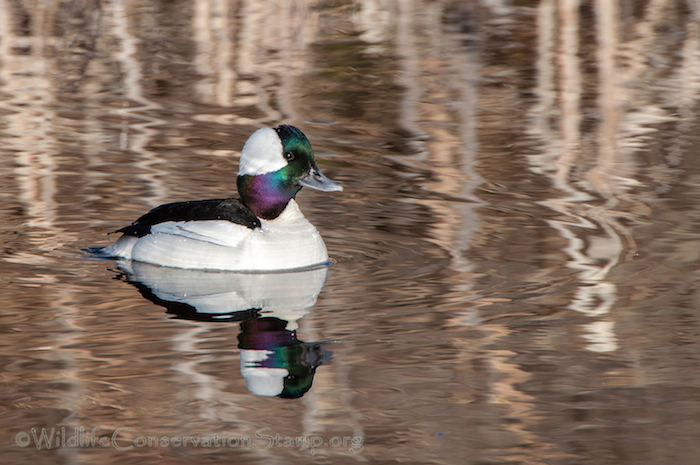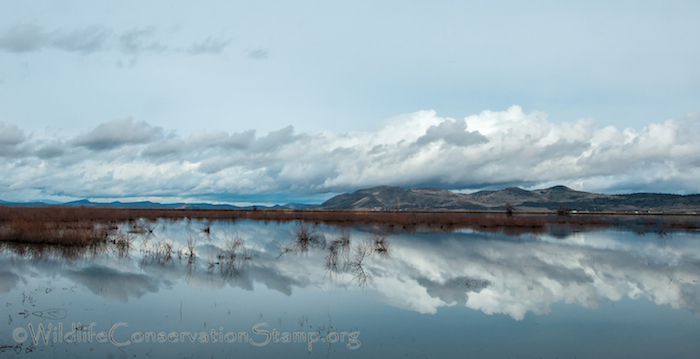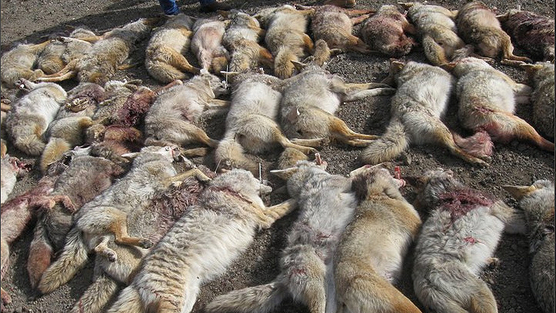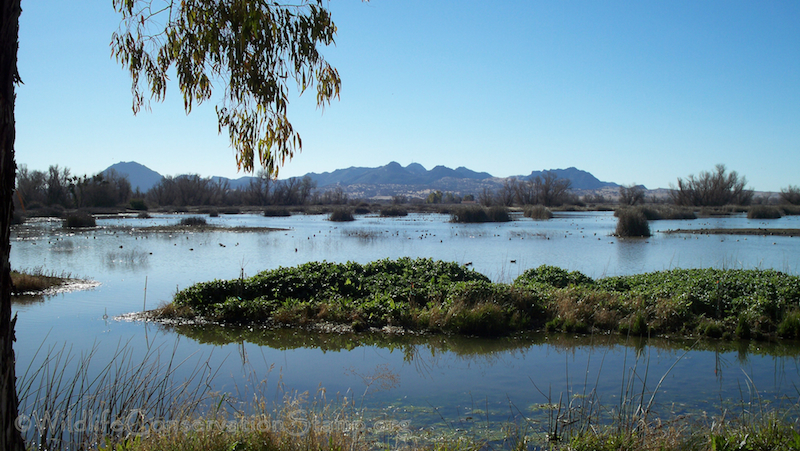
With a backdrop of the world’s smallest mountain range, the Sutter Buttes, Gray Lodge Wildlife Area is the perfect site for viewing and photographing nature. Reflective ponds, grassy fields and wooded riparian areas provide food, water and shelter for more than 300 species of resident and migrant birds and mammals.
Located approximately 60 miles north of Sacramento, Gray Lodge’s diversity and location along the Pacific Flyway make it a haven for wildlife. Surrounded by miles of rich agricultural lands, this 9,100-acre area is managed for the wildlife that call Gray Lodge home for all or part of the year. More than a million waterfowl winter here, including 100,000 geese and in the fall Sandhill Cranes arrive at Gray Lodge where they roost and feed.
The photo above is the view from parking area number 14 at the beginning of the auto tour route. You can see its location on the “Winter Wildlife Viewing Map” below.

There were many waterfowl species to be seen from this large parking area which also includes picnic tables and is the location of the paypoint kiosk. The day use fee is $4 per person which is waived with the possession of a valid California hunting or fishing license.
From the picnic area I was pleased to find a Blue-winged Teal drake among the Northern Shovelers, Green-winged Teal, Gadwall and Northern Pintails. Click on photos for full sized images.

Here is another view from the number 14 parking lot picnic area.

Along with the Dark-eyed Juncos and White-crowned Sparrows, Tree Swallows and Spotted Towhees we observed an Orange-crowned Warbler preening on a low overhanging tree branch.

There is a 0.85 mile self-guided nature trail that also originates from parking lot 14 as well as a two mile graveled, levee trail, which meanders by the edges of seasonal and permanent ponds. An illustrated pamphlet is available at the trailhead for this self-guided nature trail. It includes descriptions of what can be seen at fourteen corresponding stations on the trail map.

The large permanent pond you see on the map is vital for the resident wildlife here. Among the Cinnamon Teal and American Coots were several Double-crested Cormorants and American White Pelicans.

Gray Lodge also boasts one of California’s largest volunteer Wood Duck nest box programs which monitors over 400 nest boxes. One is seen at the number two marker on the trail map. Gray Lodge also offers guided tours, stationed environmental education, kits for the classroom and self-guided opportunities. See their Education Brochure for more information.
The nature trail leads you to a universally accessible wildlife viewing platform, overlooking a huge seasonal pond.

The platform offers magnificent views of this wetland habitat. If you look closely, on the far right of this photo, you can see Mount Lassen in the distance.

We spotted several species from this observation platform including Snow and Ross’s Geese, Northern Harrier Hawks, Turkey Vultures, Greater White-fronted Geese, Red-tailed Hawk and the ubiquitous American Coot.

On the way back to our vehicles we caught a glimpse of a Lincoln Sparrow foraging on the edge of the waterway.

This map shows the extent of the refuge accessible to the public from one week after waterfowl hunting season until two weeks before waterfowl season, roughly mid-February through September. You can compare it to the “Winter Wildlife Viewing Map” above to see how much more additional refuge land and permanent ponds are available for wildlife viewing during the non-hunting season. I am looking forward to exploring the refuge again this Spring to try to locate some resident Burrowing Owls.

The 3 mile auto loop offered up good looks at several more bird species as well as Mule deer. This pair of foraging Gadwall seemed undisturbed by the close proximity of our vehicles…

and the Great Blue Heron probably figured that we couldn’t see him.

We saw Great Egrets ready to take flight…

and Herring Gulls resting on the islands.

There were Ring-necked Ducks, Buffleheads and Ruddy Ducks…

taking advantage of this wetland habitat.

The cottonwoods and willows surrounding the ponds offer excellent cover for raptors waiting for a meal. We saw White-tailed Kite, Red-shouldered Hawk, Cooper’s Hawk and of course, Red-tailed Hawks.

Nearing the end of the auto loop there is a beautiful, well made public blind, the Harry Adamson Observation Hide.

This hide is well thought out with windows that open half way for observation and photography. There are bench seats and shelves that can be used with sandbags for camera stabilization.

This is the view from the observation hide. You can see the Snow Geese and Ross’s Geese in the distance.

Just beyond the blind on the auto tour route, if you look to your left you may see a colony of Black-crowned Night-Heron perched in the willows.

In the Sacramento Valley, as in many other areas of the state, much of the original riparian habitat was converted to farmland. The woodlands that remain at places like Gray Lodge provide food, shelter and shade for aquatic and terrestrial species like the garter snake, great blue heron, ringtail and river otter. You can download the Gray Lodge bird list here.
Currently, the California Department of Fish and Wildlife (CDFW) oversees 106 wildlife areas located throughout the state, totaling over 627,500 acres – plenty of room for unique outdoor experiences for just about any wildlife interest1. In addition there are 119 ecological reserves in California totaling nearly 129,000 acres2.
Efforts continue to enhance and protect habitat for wildlife to ensure that species have the habitat for foraging and the space to raise young for generations to come. You can see search for California Wildlife Areas by region here. You can also search for California Ecological Reserves by region here.
California also has 40 National Wildlife Refuges (NWR) and Wildlife Management Areas (WMA) administered by the U.S. Fish and Wildlife Service (USFWS). You can search for these National Refuges by state here.
References: 1Slusser, Greg (2001, July-August). Wildlife Areas – California’s Little Known Treasure. Outdoor California Magazine, 2Lewis, Kari (2001, November-Decmber). California’s Ecological Reserves. Outdoor California Magazine,
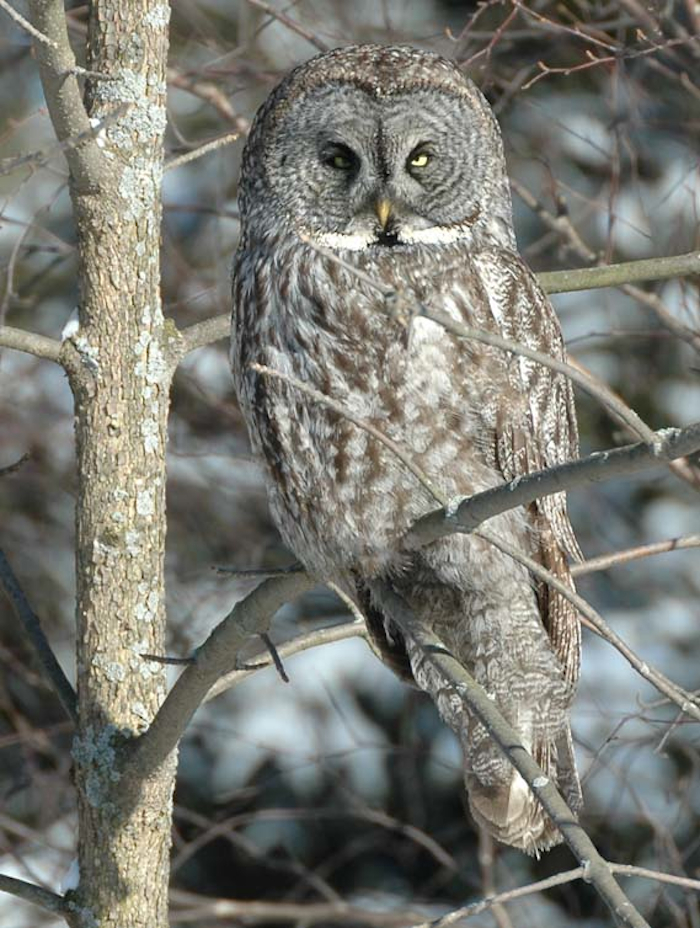 Great Gray Owl (Strix nebulosa) courtesy Wikipedia Commons
Great Gray Owl (Strix nebulosa) courtesy Wikipedia Commons
